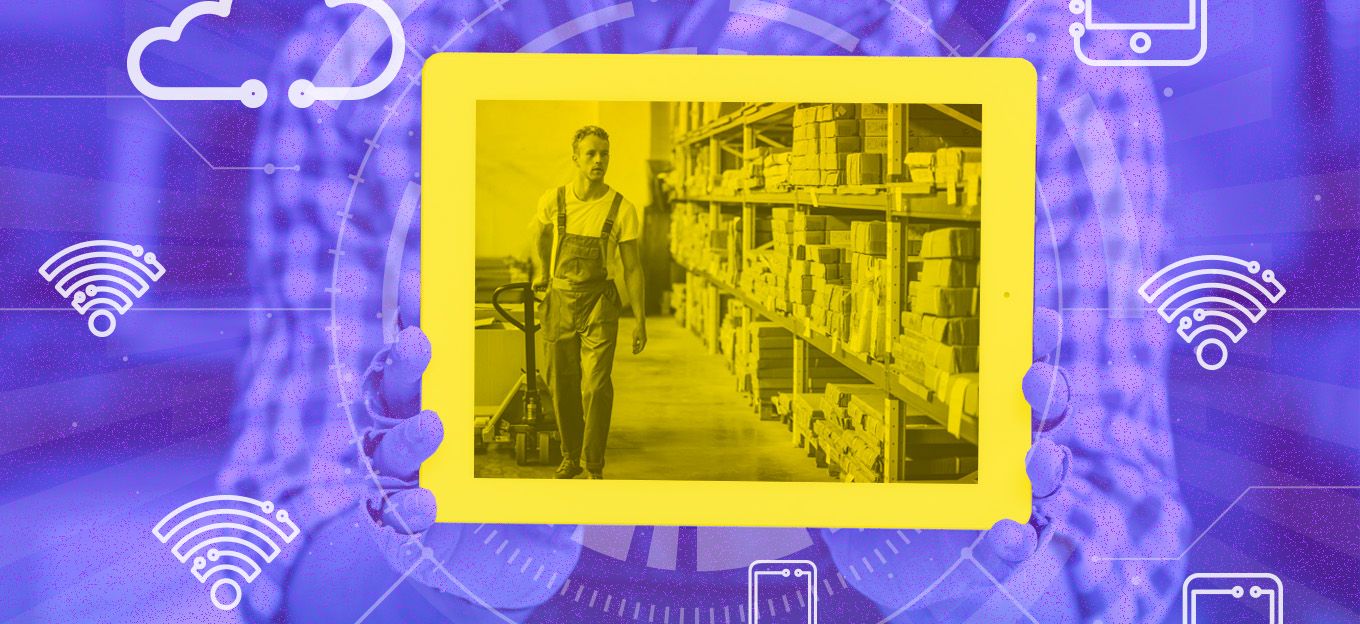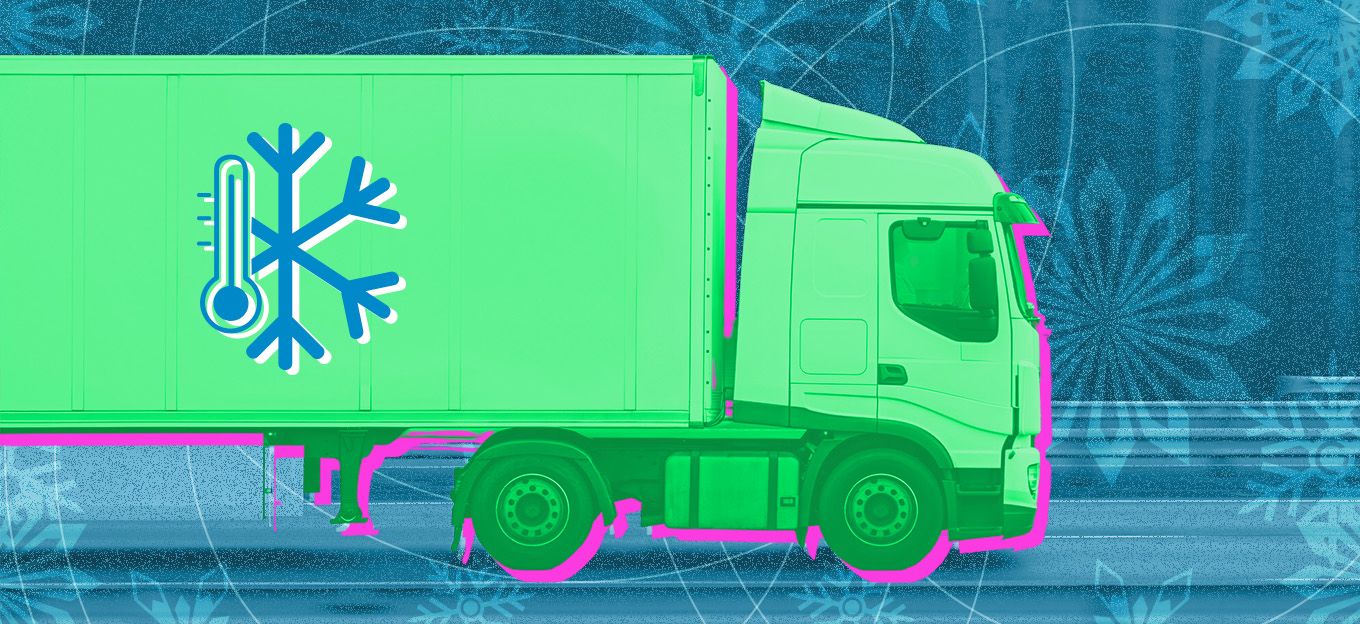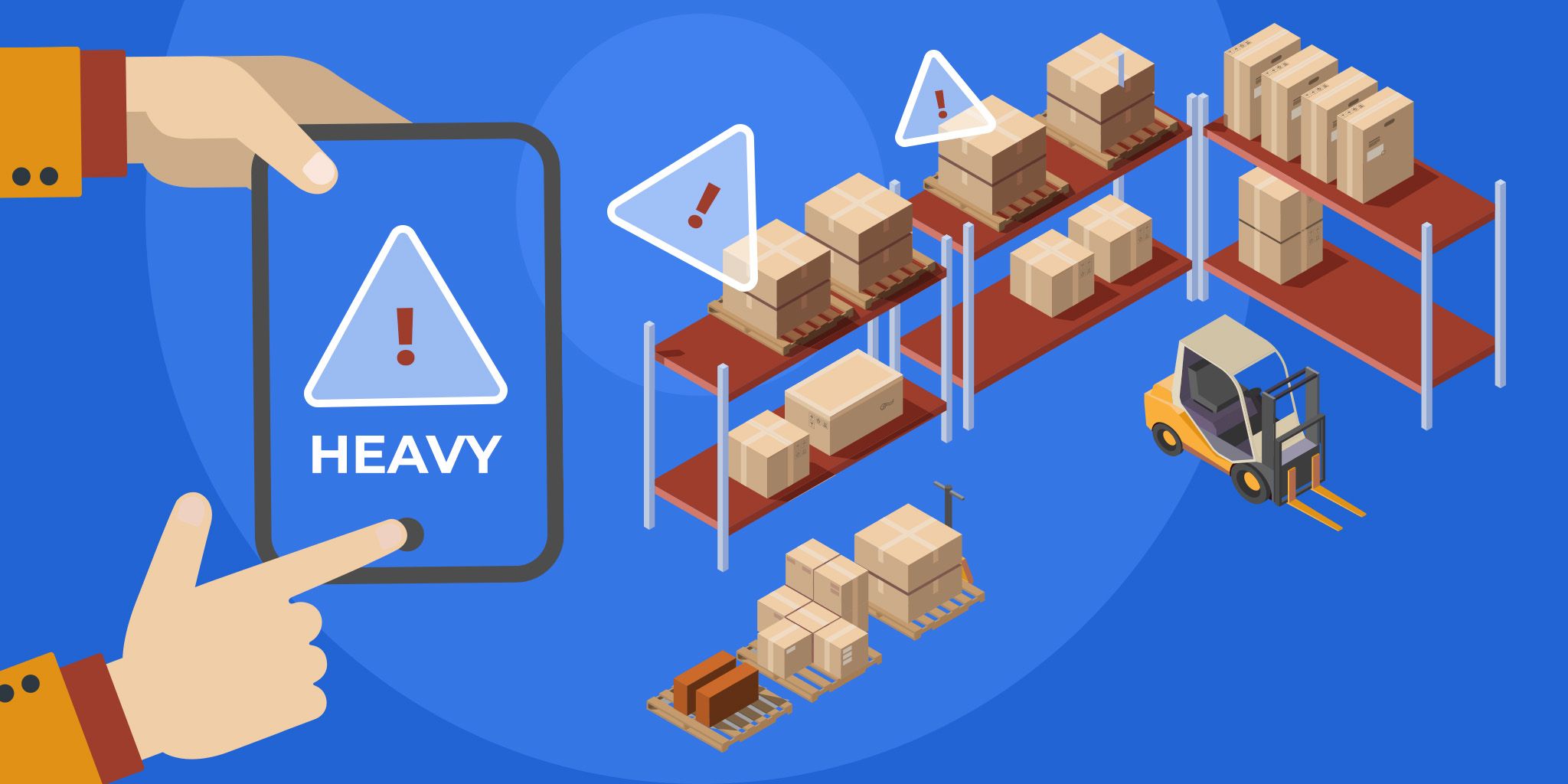AI-Powered IoT Implementation in Logistics: The Technical Inflection Point
AI-Powered IoT Implementation in Logistics: The Technical Inflection Point
- Last Updated: August 12, 2025
Fabio Rosa
- Last Updated: August 12, 2025



We have observed that the convergence of artificial intelligence and Internet of Things (IoT) infrastructure is creating a technical inflection point for logistics applications.
After years of limited adoption due to implementation complexity and analytical constraints, the integration of AI processing capabilities — particularly through Model Context Protocol (MCP) servers — is fundamentally altering the technical and economic feasibility of comprehensive IoT deployments in supply chain operations.
Technical Architecture Evolution
In our experience, the primary bottleneck in IoT logistics implementations has been the processing and contextual analysis of sensor data streams. Traditional architectures required significant investment in custom data processing pipelines, often resulting in reactive rather than predictive systems.
MCP servers address this limitation by providing standardized interfaces for AI models to process contextual IoT data, enabling real-time analytical capabilities without extensive custom development.
This architectural shift allows for the implementation of multi-dimensional sensor arrays that extend far beyond basic GPS tracking. Modern logistics IoT systems now incorporate:
Environmental Condition Monitoring: Temperature sensors with ±0.1°C accuracy, humidity monitoring with ±2 percent RH precision, barometric pressure sensing for altitude-based routing optimization, and multi-axis accelerometers for shock and vibration detection during transport.
Advanced Chemical and Physical Sensing: Gas sensors for atmospheric composition monitoring (particularly critical for food and pharmaceutical cold chains), light exposure sensors for photosensitive cargo, and even spectrometric analysis for contamination detection in high-value shipments.
Predictive Equipment Analytics: Vibration analysis for transport vehicle maintenance prediction, engine performance monitoring through OBD-II integration, and tire pressure monitoring systems (TPMS) with predictive failure analysis.
Market Investment Patterns and Technical Adoption
Recent market analysis provides concrete evidence of this technological shift. According to the 2025 MHI Annual Industry Report published by MHI and Deloitte, 55 percent of supply chain leaders are increasing their supply chain technology and innovation investments, with 60 percent saying they are planning to spend over $1 million. Nineteen percent plan to spend over $10 million on technology integration.
Technical adoption projections reveal the scale of this transformation. The same industry report from MHI and Deloitte projects Sensors and Automatic Identification technology adoption to reach 88 percent within five years, while they project Internet of Things adoption to reach 77 percent. Most critically for AI-powered analytics, Artificial Intelligence adoption is expected to rise dramatically, with 28 percent reporting current usage and another 54 percent planning implementation within 5 years, making the 5-year total 82 percent by 2029.
McKinsey's 2025 AI workplace report also indicates that companies in travel, transportation, and logistics are spending less on AI compared to their potential for value realization, suggesting significant room for growth as technical barriers are reduced through standardized AI integration platforms.
Real-Time Analytics and Agentic AI Implementation
The technical capability that distinguishes current IoT implementations from previous generations is the deployment of agentic AI systems. Agentic AI, which can operate independently without human guidance or oversight, has the potential to quickly and proactively address disruptions, enhance forecasting precision, and improve overall visibility within the supply chain.
This represents a fundamental shift from reactive monitoring to predictive intervention. When implemented through MCP servers, these systems can process multi-source sensor data to:
- Execute real-time route optimization based on current traffic, weather, and cargo condition data
- Automatically adjust transportation parameters (such as refrigeration settings) based on external temperature fluctuations and predicted arrival times
- Initiate contingency protocols when sensor data indicates potential cargo compromise
- Coordinate with warehouse management systems to optimize receiving schedules based on real-time shipment condition data
Although the recent addition of these new technologies is still under evaluation, we have observed that the democratization of advanced IoT analytics stems from standardized AI processing architectures that eliminate the need for custom machine learning model development.
MCP servers, for example, provide pre-trained models specifically designed for logistics applications, dramatically reducing the technical expertise required for implementation.
Integration Challenges and Technical Requirements
Despite the improved accessibility, successful implementation requires addressing specific technical prerequisites. As noted in the MHI-Deloitte 2025 report, high-quality data will be essential to utilizing agentic AI technology to drive efficiency and agility. Additionally, predictable and ethical behavior from AI solutions will be a focus.
The technical infrastructure must support:
- Edge computing capabilities for real-time processing of high-frequency sensor data
- Reliable cellular or satellite connectivity for remote tracking applications
- Data standardization protocols for cross-platform integration
- Cybersecurity frameworks for protecting sensitive shipment and routing data
Democratizing Innovation: Small and Medium Enterprises in IoT Logistics
The traditional barriers that prevented small and medium-sized logistics companies from implementing sophisticated IoT solutions are rapidly dissolving.
Previously, only large enterprises with dedicated IT teams and substantial technology budgets could afford to develop custom analytics platforms and maintain complex data infrastructure.
The emergence of AI-powered MCP servers fundamentally changes this landscape, enabling SMEs with logistics expertise but limited technical resources to develop innovative supply chain solutions at reasonable costs and timeframes.
Breaking Down the Enterprise Advantage
Small and medium logistics companies often possess deep operational knowledge and agility that larger competitors lack. However, they have been historically disadvantaged in technology adoption due to:
- High upfront development costs for custom IoT platforms
- Need for specialized data science teams
- Complex integration requirements with existing systems
- Lengthy implementation timelines that strain operational resources
MCP servers eliminate these barriers by providing pre-built AI capabilities that can be configured rather than developed from scratch. A regional distribution company can now implement the same level of predictive analytics and real-time monitoring that was previously exclusive to multinational corporations.
Cost and Time Efficiency for SMEs
Implementation timelines have significantly improved with standardized AI platforms, with many SME logistics companies reporting substantially faster deployments compared to traditional custom development approaches.
Development costs have decreased substantially as well. While custom analytics platforms previously required major capital investments, SMEs can now achieve similar capabilities at a fraction of historical costs through cloud-based solutions and pre-configured AI models.
This cost reduction stems from:
- Standardized AI models that require configuration rather than development
- Cloud-based infrastructure that eliminates hardware investments
- Natural language interfaces that reduce training requirements
- Modular deployment that allows phased implementation
Competitive Innovation Opportunities
SMEs can now compete on innovation rather than just operational efficiency. A mid-sized cold storage facility can implement predictive temperature management that optimizes energy consumption while maintaining product quality.
A regional trucking company can deploy route optimization that considers real-time traffic, weather, and cargo conditions. These capabilities create differentiation opportunities that were previously unavailable to smaller players.
The agility advantage of SMEs becomes amplified when combined with accessible AI technology. While large enterprises navigate complex approval processes and legacy system integration challenges, smaller companies can rapidly prototype and deploy innovative solutions.
This creates a potential competitive reversal where logistics expertise combined with modern AI tools can outperform traditional scale advantages.
Technical Implementation Accessibility for SMEs
The democratization of advanced IoT analytics stems from standardized AI processing architectures that eliminate the need for custom machine learning model development. MCP servers provide pre-trained models specifically designed for logistics applications, dramatically reducing the technical expertise required for implementation.
SME implementations can leverage the same technical capabilities as enterprise solutions, and the technical infrastructure requirements now remain consistent across company sizes. However, cloud-based deployment models and standardized APIs allow SMEs to access enterprise-grade technical capabilities without maintaining internal infrastructure or specialized technical teams.
Practical Implementation: Analytics Without Data Science Expertise
The most significant advantage of AI tools and MCP server integration is enabling logistics professionals to perform sophisticated data analytics without requiring data science expertise.
Through natural language interfaces, warehouse managers and logistics coordinators can now access the same analytical capabilities that previously required specialized technical teams.
Real-World Analytics Examples using MCP with IoT
Pallet Dwell Time Analysis
A warehouse supervisor can simply ask an AI Agent: "Show me which pallets have been sitting in zone B-7 for more than 48 hours." The MCP server processes sensor data from trackers and movement detectors, instantly generating a report identifying static inventory. The system can automatically:
- Calculate dwell times for each pallet based on last movement timestamps
- Identify pallets approaching storage cost thresholds
- Generate alerts for products nearing expiration dates
- Suggest optimal movement priorities based on order demand patterns
The supervisor receives this analysis in plain language: "12 pallets in zone B-7 have exceeded 48-hour dwell time. Pallet P-4471 contains medical supplies expiring in 6 days and should be prioritized for shipment. Zone utilization is currently at 87 percent capacity."
Movement Pattern Forecasting
Instead of manually tracking movement patterns, a logistics coordinator can ask: "Which areas will have the highest activity next Tuesday between 2-4 PM?" The MCP server analyzes historical movement data, current inventory levels, scheduled deliveries, and seasonal patterns to provide actionable insights:
- Identifies high-traffic zones requiring additional staffing
- Predicts equipment needs for specific time windows
- Suggests pre-positioning of mobile assets (forklifts, picking carts)
- Recommends temporary workflow adjustments to prevent bottlenecks
An AI Agent might respond: "Based on historical data and scheduled deliveries, zones C-3 and D-1 will experience 340 percent higher activity than baseline on Tuesday, 2-4 PM. Recommend deploying 2 additional forklifts to zone C-3 and implementing a temporary one-way traffic flow in aisle D-1."
Predictive Equipment Maintenance
Equipment managers can query: "Which forklifts need maintenance attention this week?" The system processes vibration sensor data, usage hours, and performance metrics to deliver maintenance predictions:
- Identifies equipment showing early wear indicators
- Calculates optimal maintenance windows to minimize operational disruption
- Predicts component failure probabilities based on usage patterns
- Suggests preventive actions before breakdowns occur
The analysis might indicate: "Forklift FL-08 shows 23 percent increased vibration in the hydraulic system. Recommend inspection within 72 hours to prevent potential failure during next week's peak operations."
Technical Implementation Simplicity
These analytics capabilities require no SQL queries, statistical modeling knowledge, or data visualization expertise. The MCP server handles data integration from multiple sources:
- Indoor/outdoor tracking systems for inventory location and movement
- Environmental sensors for temperature and humidity monitoring
- Vehicle telematics for equipment performance data
- Warehouse management system APIs for order and scheduling data
- External data sources for weather and traffic conditions
The natural language interface democratizes access to sophisticated analytics, enabling logistics professionals to focus on operational decisions rather than data processing technicalities. This represents a fundamental shift from reactive problem-solving to proactive optimization based on predictive insights.
Market Trajectory and Technical Outlook
The technical foundation is now in place for widespread IoT adoption in logistics. The top five tech-specific trends include: Cybersecurity and Data Security, Demand for Real-Time Data, Digitization and the Pace of Technology Adoption, Ecommerce Growth, and Sustainability, all of which align with IoT implementation requirements.
The combination of standardized AI processing through MCP servers, improved sensor reliability and accuracy, and reduced implementation complexity creates a technical environment where comprehensive IoT logistics solutions are not only feasible but economically compelling for companies across the size spectrum.
Organizations that implement these AI-powered IoT systems now will establish significant technical advantages in operational efficiency, predictive capability, and customer service reliability. The technical barriers that previously limited IoT adoption have been systematically addressed, making this an optimal time for logistics companies to deploy comprehensive monitoring and analytics solutions.
Is 2025 the year that smart IoT applications for logistics will finally be accomplished by anyone, regardless of company size or data analytics expertise?
With AI-powered analytics becoming as accessible as asking a simple question, and implementation costs dropping to levels that even small logistics companies can afford, we may be witnessing the democratization of technology that was once exclusive to industry giants. The tools are here, the barriers have fallen, and the competitive advantage now belongs to those who understand logistics operations, not just data science.
The Most Comprehensive IoT Newsletter for Enterprises
Showcasing the highest-quality content, resources, news, and insights from the world of the Internet of Things. Subscribe to remain informed and up-to-date.
New Podcast Episode

Moving Past the Pilot Phase in IoT and AI
Related Articles




